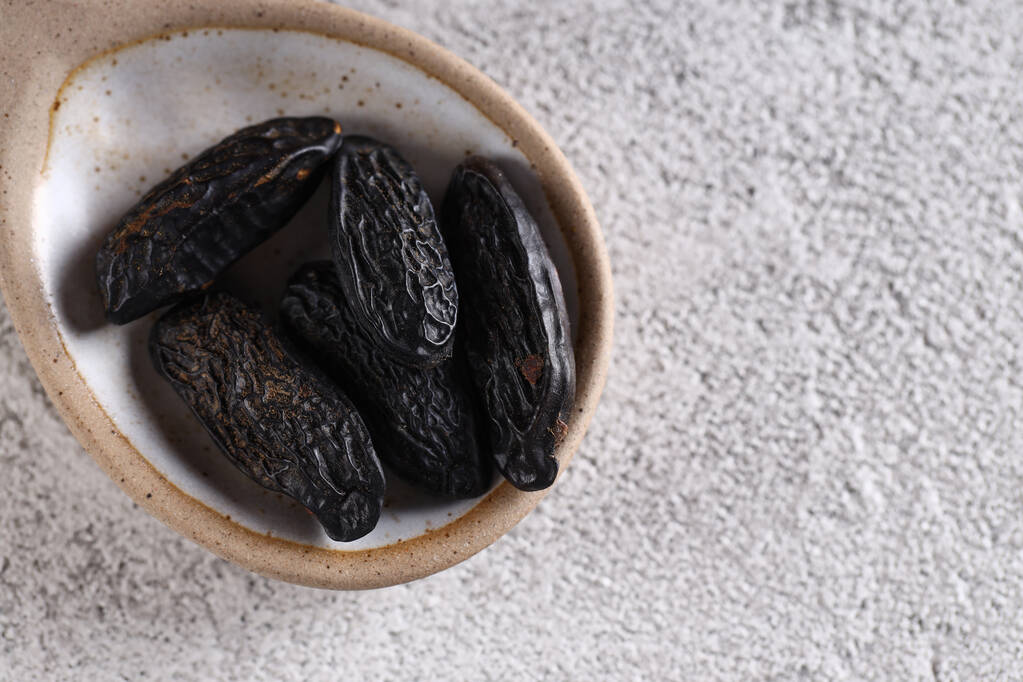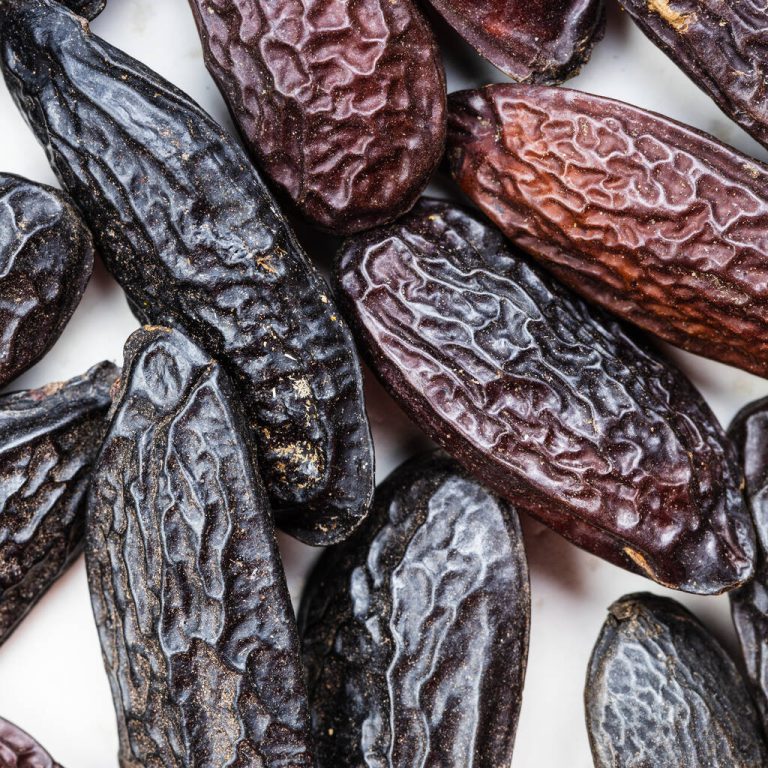The taste of tonka beans is intense and unique. You can use the spice to refine desserts and sweets, for example. Here you can find out where tonka beans come from, how you use them and how they work.
Tonka beans are the elongated seeds of the tonka bean tree. Although this belongs to the legume family, it has little in common with the legumes we know. Tonka beans are brownish-black and a few centimeters long. The seeds are encased in the yellow fruits of the tonka tree.
onka trees are found in Venezuela, Guyana, Brazil, Peru and Colombia, among others. Due to the great demand for the newly discovered spice, tonka beans are now also grown in other parts of South America, in Trinidad, as well as in Kenya and Nigeria. The tonka beans available in this country mostly come from Venezuela and Nigeria.

Tonka Bean: taste of the exquisite seeds
Tonka beans have a floral-sweet aroma and their taste is reminiscent of vanilla and bitter almonds. In haute cuisine, tonka beans are among the most important spice discoveries of recent years. Even if it is still relatively unknown in Germany, the seed is being used more and more frequently in fine desserts and sweet dishes.
You can refine creams, cakes, sweet pastries or ice cream with tonka beans. The fine floral note of the tonka bean is particularly good in panna cotta or crème brulée, for example. But you can also refine hearty dishes such as red cabbage, pumpkin soup or mashed potatoes with the taste of tonka beans.
Using tonka beans: tips for the kitchen
Tonka beans are only available dried from us and are therefore very hard. To use them in the kitchen, grate them with a nutmeg grater. But be careful: A small amount is sufficient, otherwise the taste of the tonka beans will quickly become too intrusive.
Alternatively, you can soak whole tonka beans in rum or boil them for milk or cream-based desserts. To do this, boil the tonka beans in milk or cream for ten minutes and let them soak overnight. Depending on the recipe, one or two beans are enough. Thanks to the intense taste, you can reuse the tonka beans up to ten times this way.
By the way, tonka beans are used not only as a spice, but also as a fragrance. As early as the 18th century, tonka beans were put in the laundry in Venezuela, leaving them with a pleasant scent. Tonka beans are also used for perfume, tobacco and aromatherapy.

Flavorful tonka bean: healthy or dangerous?
Among the natives of South America, the tonka bean is not only known for its taste. It has always been regarded as a medicinal plant with magical powers. It was said to have protective and lucky powers and the beans were carried as lucky charms. The scent of the seeds is said to have a mood-enhancing and erotic effect. Tonka beans are still used in folk medicine today. However, these effects have not been scientifically proven.
Today, tonka beans are best known for their relatively high coumarin content. On average, this is two to three percent, but can also be up to ten percent.
Coumarin is a flavoring substance that is also found in cassia cinnamon, among other things, and is liver-damaging in large quantities.
This flavoring was also suspected of being carcinogenic for a long time, which is why tonka beans were banned in Germany for some time. This was the result of animal experiments, but could not be confirmed in humans according to the Federal Institute for Risk Assessment (BfR). The import of the spice plant has been permitted again since 1991.
According to the BfR, a daily intake of up to 0.1 milligrams of coumarin per kilogram of body weight is harmless. So if you don’t season generously with tonka beans every day, you don’t have to fear the coumarin it contains. Nevertheless, the following applies: Use tonka beans sparingly – a small amount is sufficient for seasoning.
On the other hand, tonka beans are valued for their coumarin content, as the substance is also used medicinally. Coumarins (coumarin derivatives) are used as anticoagulant drugs.

